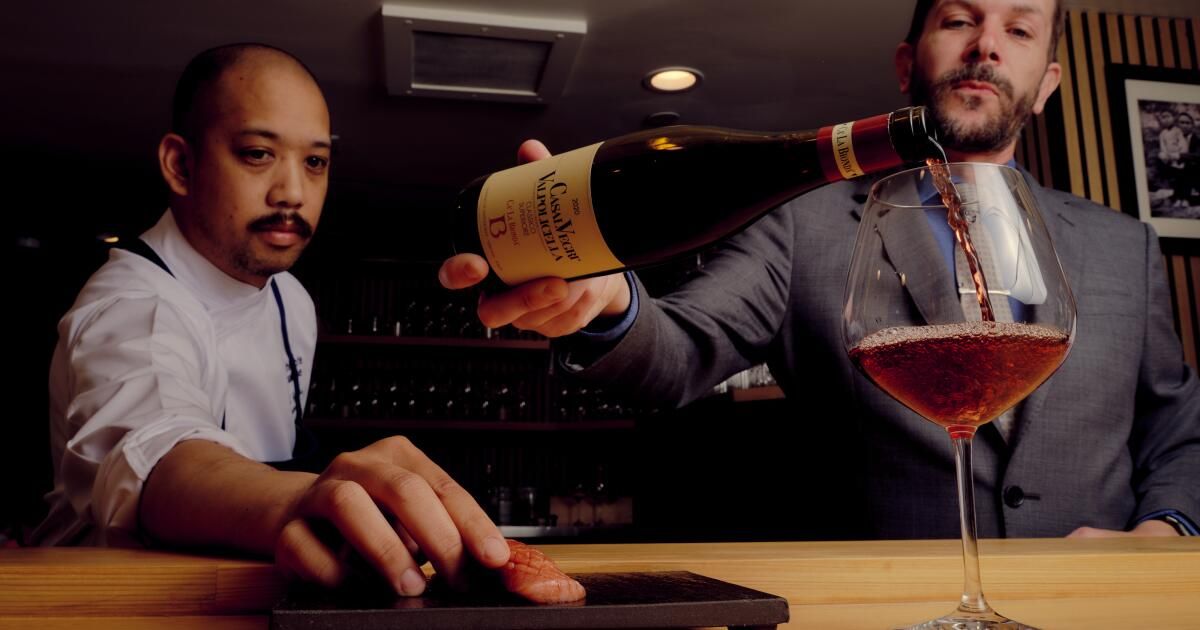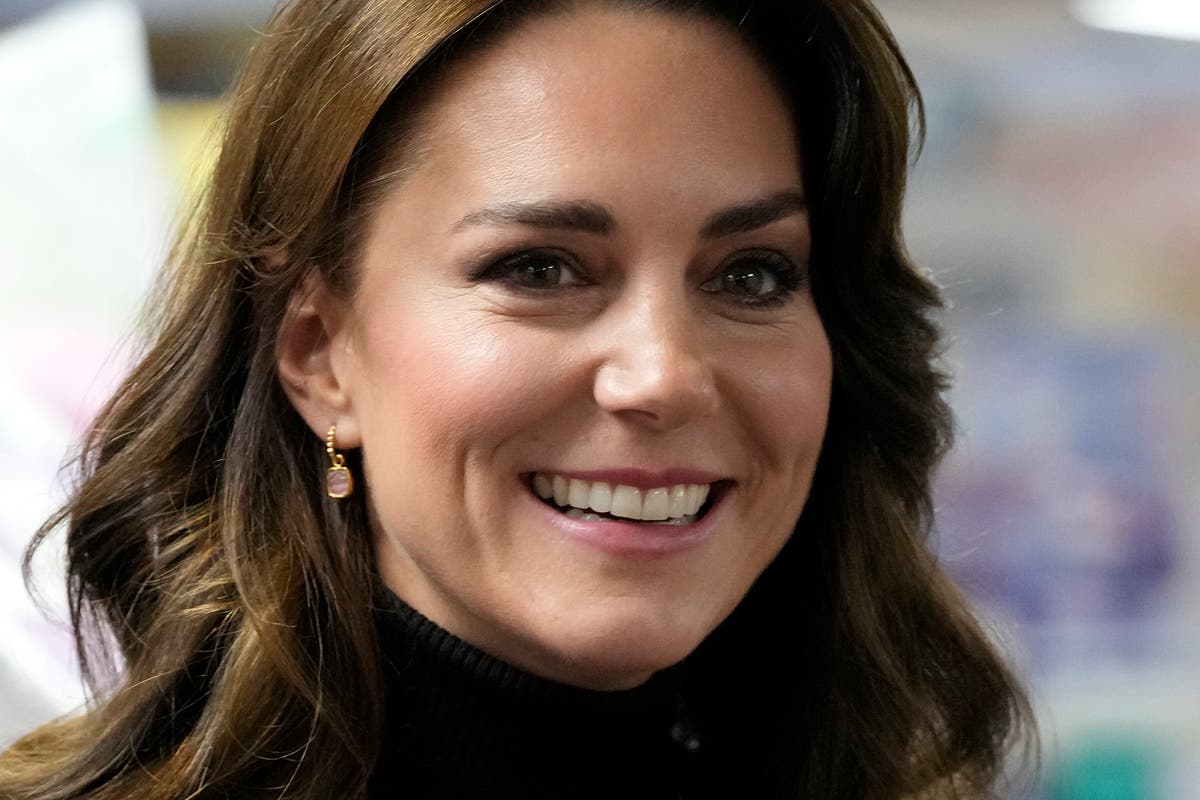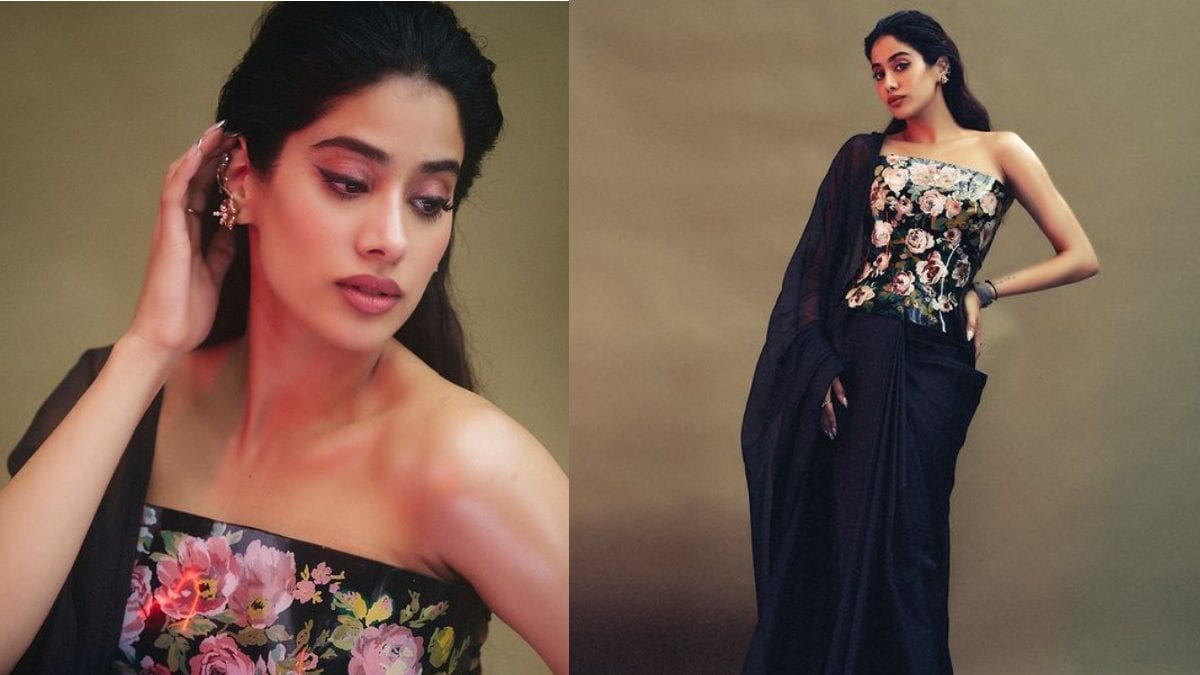Why is it so difficult to combine sushi with wine?
Most sushi bars focus on sake, and while fine wine is not uncommon in a sushi setting, it is often offered only by bottle, from traditionally revered appellations such as Champagne, Burgundy and Napa. In recent years, sushi bars have become centers for drinking fine wine, with an increasing emphasis on food pairing.
But at Sushi Note's new Beverly Hills location, in the Rodeo Collection parking lot beneath the Givenchy and Bulgari boutiques (and at least two plastic surgery offices), the restaurant is pushing the boundaries of sushi drink pairings. omakase. The focus here isn't on sake, whiskey, cocktails, or traditional ideas about what wines pair with sushi, but instead on a kaleidoscopic barrage of obscure and beloved wines.
The entrance to Sushi Note in Beverly Hills is through the driveway to the Rodeo Collection underground parking lot.
(Shelby Moore / For The Times)
“Each fish is distinctively different,” says Sushi Note co-founder Dave Gibbs, who operates the restaurant in partnership with Andy Paxson and sushi chef Kiminobu Saito. “We believe there is a perfect wine for everyone, but it requires effort and time.”
The difficulty inherent in pairings comes down to three factors: wildly varied fish, from soft, buttery albacore tuna to salty, oily mackerel; sushi rice vinegar; and strong-flavored condiments like wasabi and pickled ginger.
At Sushi Note, the process of creating pairings involves tasting, tweaking and taking risks with different wines from around the world, incorporating the work of a team of sommeliers at two Sushi Note locations, including the original in Sherman Oaks. A more ambitious omakase at Beverly Hills Sushi Note called for a more ambitious wine pairing, and that's what you'll find here.
“Frankly, every night there are things we shouldn't be serving,” Gibbs says. “There is always a standout wine that no businessman with a brain would normally serve by the glass. It is a direct loss. “I’m losing money on this bottle, but it’s worth it to improve the overall experience.”
The detail is what sets this venue apart: Led by beverage director Ian Lokey, a team of more than a dozen wine experts create a unique series of pairings each week, incorporating rare labels of classic wines, including Champagne and Burgundy , along with lesser-known wines. well-known bottles from anywhere in the world.
“We employ more somms than waiters,” says Lokey, whose wine list has more than 350 labels. Lokey and his team taste and compare wines alongside fish every week, working directly with culinary director Earl Aguilar and chef Saito, testing different potential combinations before arriving at a combination that exactly matches the fusion of fish, rice and seasonings for each piece. of sushi. Sake, the traditional fermented rice drink that could be most popular in america than Japan to drink with sushi, it is served sparingly and often as a counterpoint.
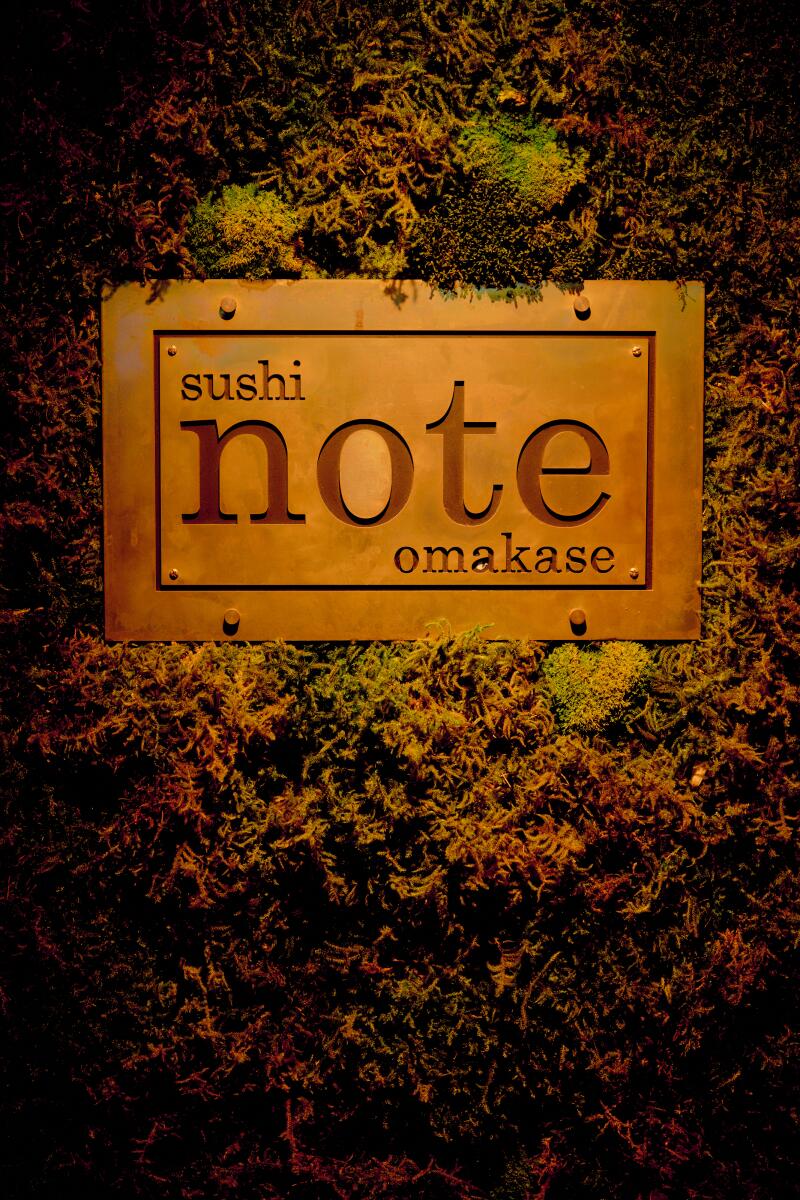
Sushi Note opened in Beverly Hills earlier this year.

Sushi Note owner Dave Gibbs with a bottle of Burgundy wine.
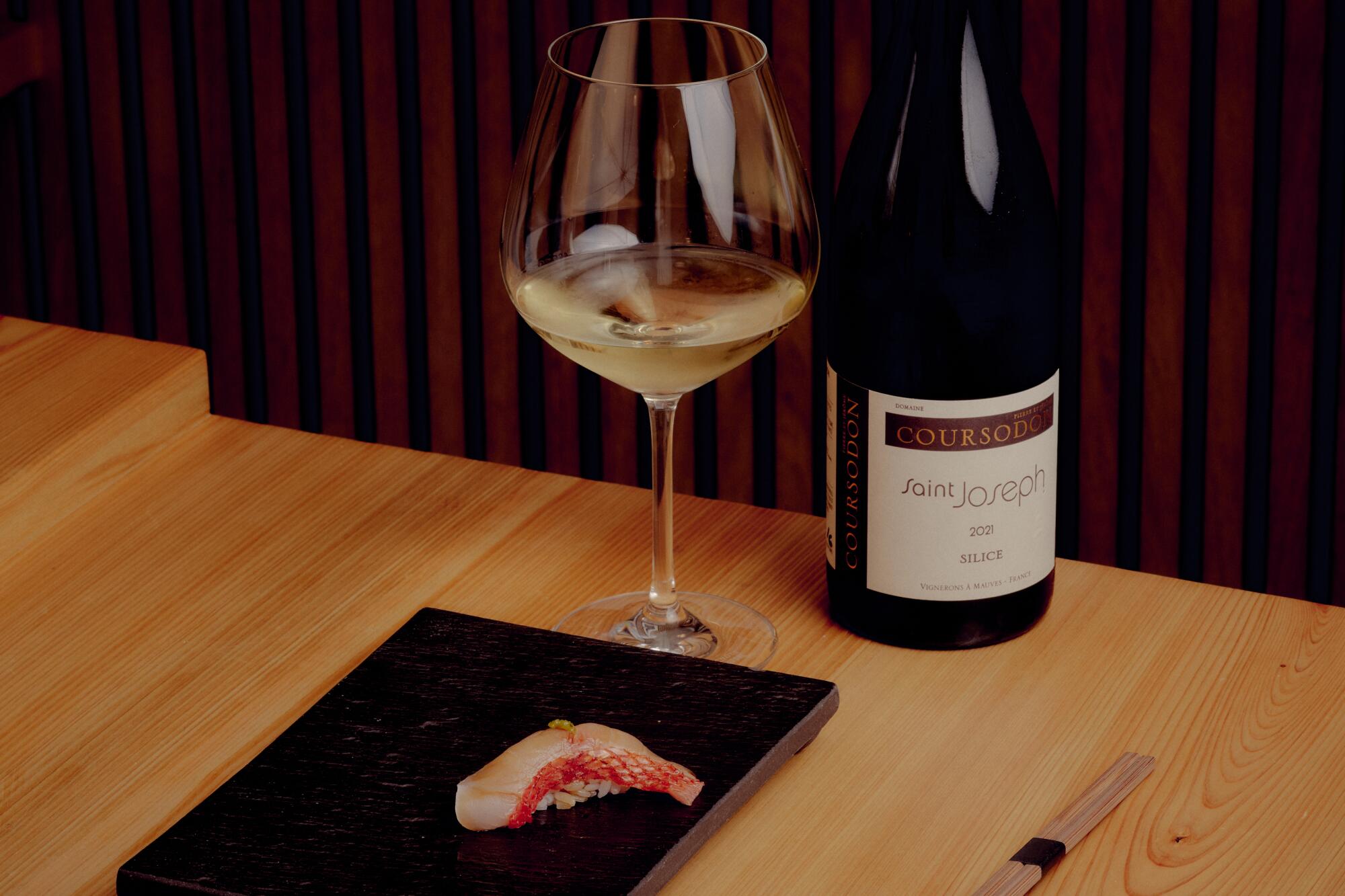
Kinmedai sushi with organic Marsanne wine from the Rhône Valley.
You can opt for just sake at Sushi Note – the restaurant's bottle list gives you the option. But skipping the wine pairing here could be like dousing your chutoro with soy sauce from a small plastic packet.
Serving wine with sushi is not an easy matter. Restaurants like the two-Michelin-starred kaiseki Hayato in the Arts District will cater to guests' wine requests with clever pairings for their sushi dishes. And the Ootoro mini chain in Little Tokyo, Walnut and Irvine bills itself as a sushi and wine bar. Further afield, Sushi Bar ATX in Austin and Soseki in Winter Park, Florida, have made wine service a focal point. But Sushi Note's dedication to pairing its omakase piece by piece with nightly changing wine pairings helps it stand out in the increasingly crowded market for high-end sushi in Los Angeles and develop a national reputation for its brand. A third restaurant is currently in development in Las Vegas.
The right wine with the right fish
On any given night, Sushi Note's sommelier team will serve a dozen different wines by the glass throughout an omakase experience. This represents hundreds of hours of collaborative work by a team of sommeliers including Briana O'Connor, Sean Muramatsu, Jonathan Sanchez and Omar Lima, working together to find exactly the right wine to pair with a given cut of fish.
“The level of oil, the garnish, the ratio of fish to rice… each of these factors influences finding a combination,” says Lokey.
There is also the tug-of-war balance between fish and rice, in which the wrong wine can easily clash.
“Some of our guests still find the idea of drinking wine with sushi challenging,” says sommelier Omar Lima, “and, in particular, red wine.”
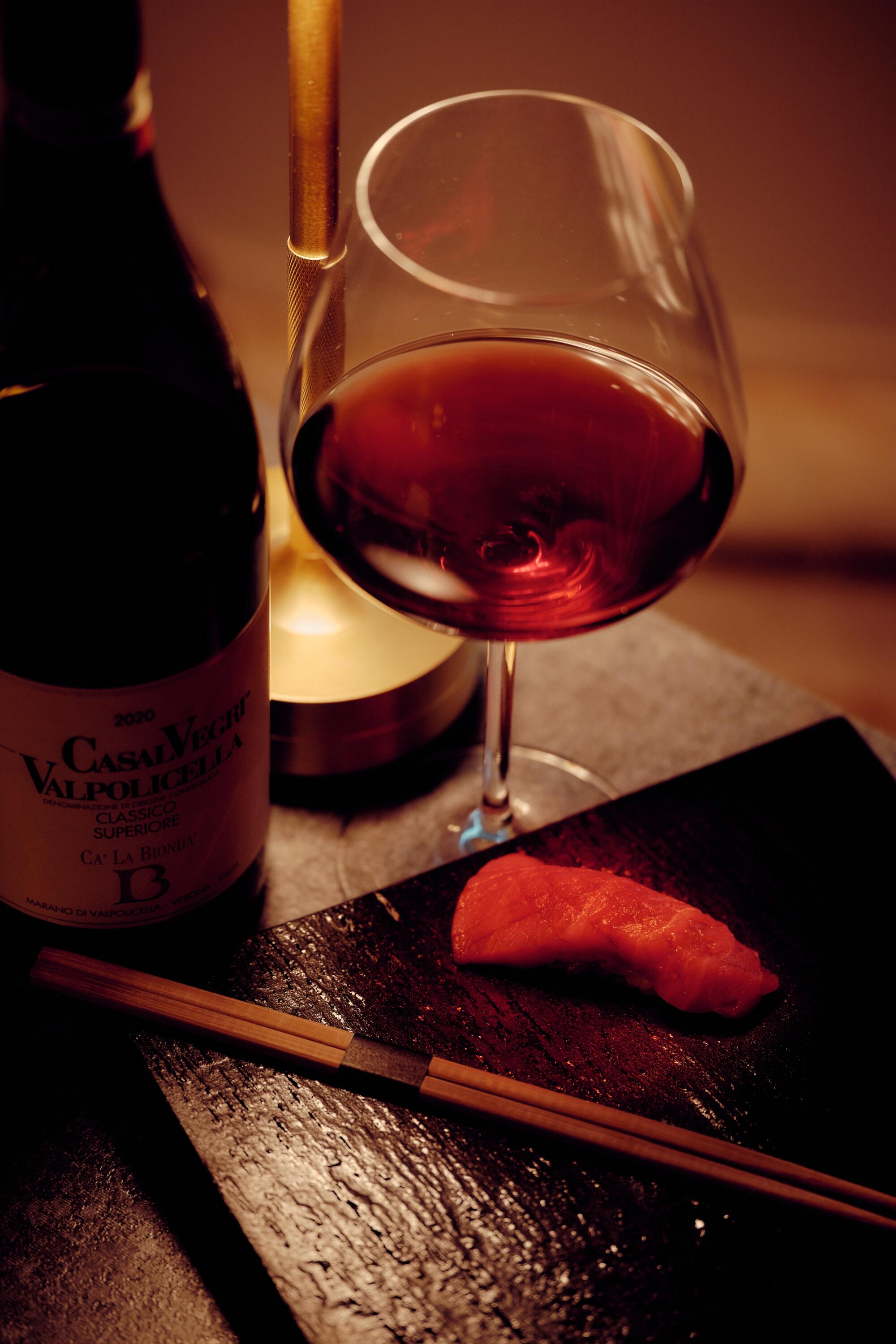
“Some of our guests still find the idea of drinking wine with sushi challenging,” says sommelier Omar Lima, “and, in particular, red wine.”
This old orthodoxy (no red wine with fish) is being directly confronted by Sushi Note, whose wine team revels in the complexity that can be found, for example, in the lighter-style red wines of the Loire Valley or the High altitude Pinot Noir. . Note doesn't serve much Cabernet, but the light, high-toned reds can be a revelation: a natural red Cabernet Franc from Saumur sings with chutoro, while a Burgundy wine from the town of Irancy, where up to 10% of the Caesar grape is allowed alongside Pinot Noir: it subtly cuts and complements a bright slice of yellowtail, brought directly from Japan.
In practice, the dining experience at Sushi Note in Beverly Hills is a blur – “an arsenal of bottles,” says Omar Lima – with degrees of difficulty for wine service that reward knowledge and interest. A 2008 Jacques Chopin Champagne, with notes of toasted brioche from long aging, is combined with Hokkaido uni and shiro ebi nigiri, offering layers of flavour: creamy, salty flavors from the uni and a distinct sweetness from the shrimp, all reinforced for an underlying interplay of texture and sweet-sour flavor between expertly vinegared rice and bread-toasted vintage champagne.
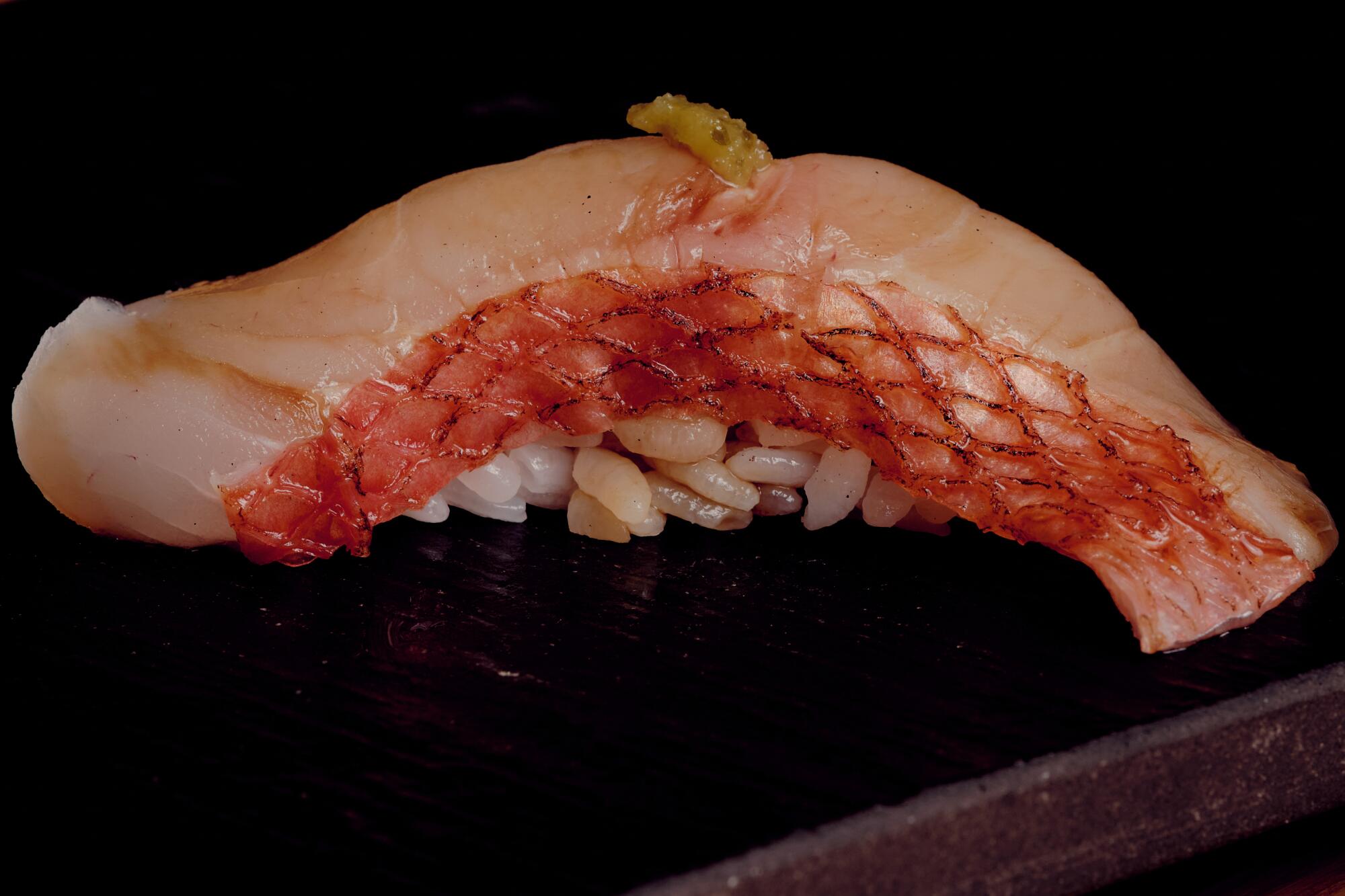
One of chef Kiminobu Saito's favorite combinations is wild-caught Japanese medai with a hint of yuzu, combined with Chablis.
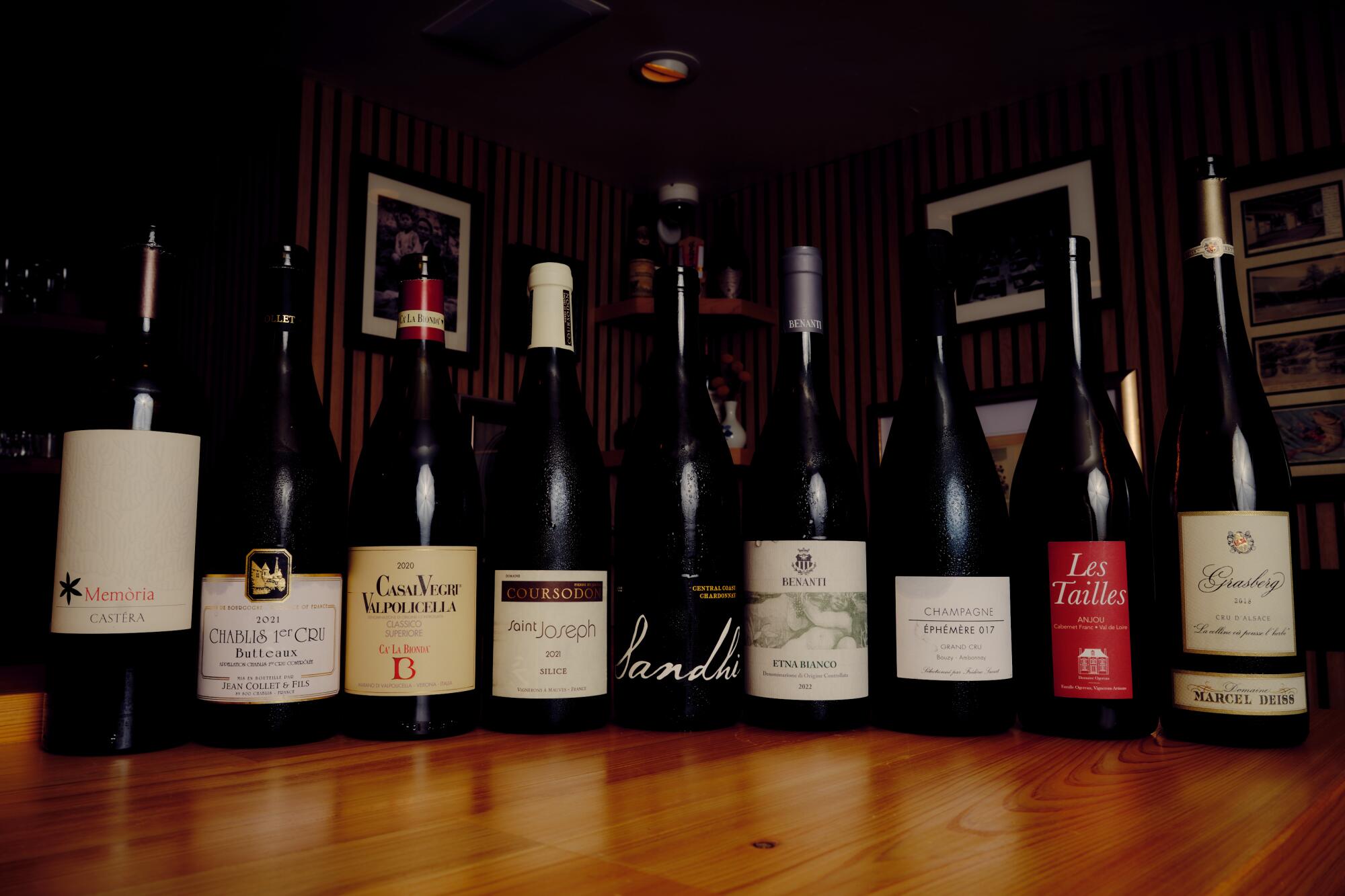
An arsenal of wines from a list of 350 labels represents what you might expect from the pairings at Sushi Note.
Japanese mackerel (saba) is served with an unusual Pinot Blanc from Alsace producer Marc Kreydenweiss, a relatively unknown and rule-breaking winemaker working with a little-known grape, accompanied by a fish that few Americans would include as their sushi dish. favorite, with superior performance. results. The light texture and understated flavor of the mackerel are cut like lightning by the Pinot Blanc, which somehow reflects the slightly oily, lip-smacking quality of the fish.
A dizzying sequence of pairings allows the concept to accumulate a kind of thermal mass over the course of an omakase seat. First, a glass of Aligoté, the forgotten white grape from Burgundy that's all the rage right now among wine fans, along with delicately cured red snapper.
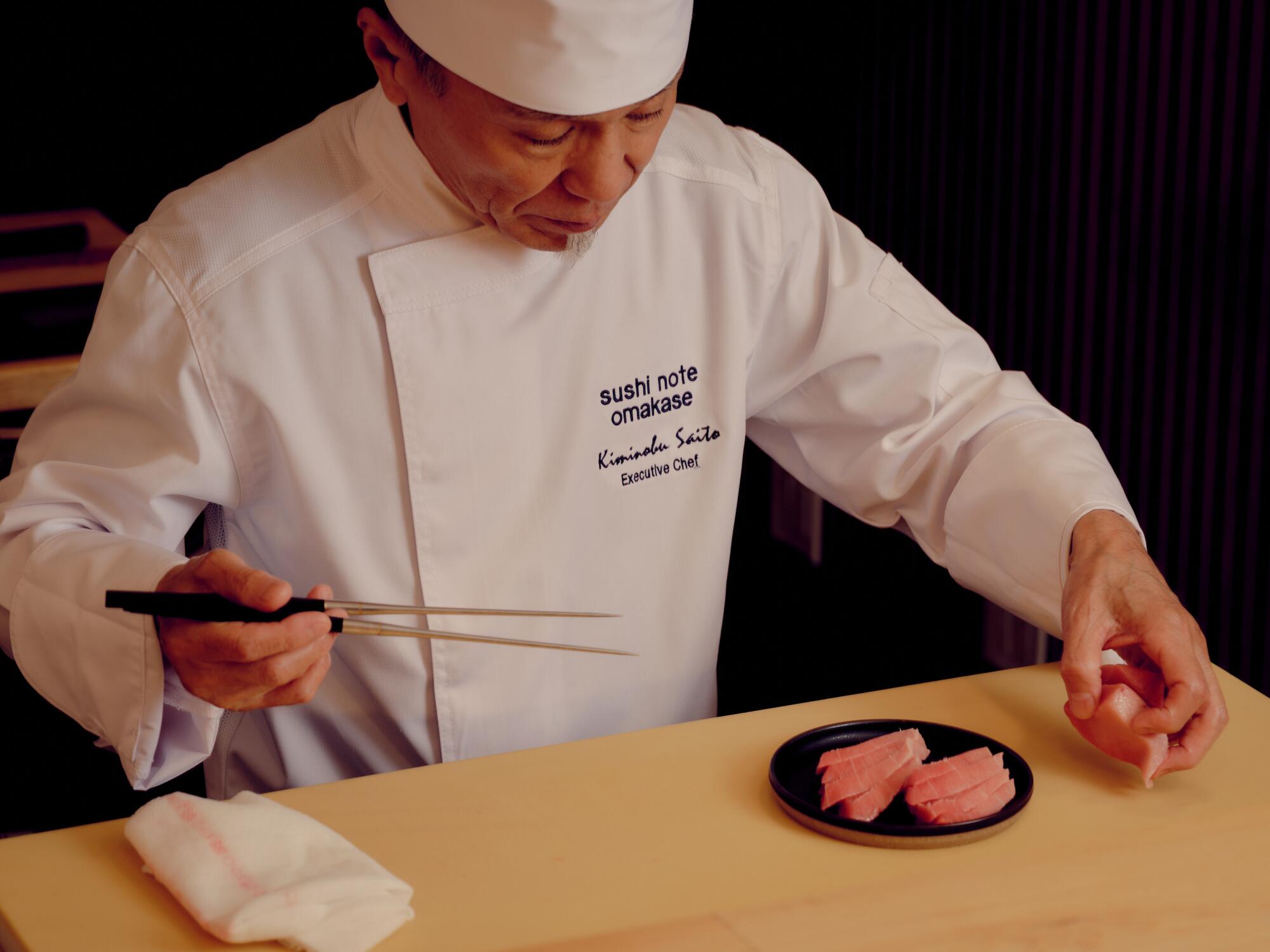
Chef Saito prepares otoro, the fattiest cut of tuna, to serve alongside a glass of Galician red wine.
Then, one of Chef Saito's favorite pairings: wild-caught Japanese medai with a hint of yuzu, combined with Chablis, the flint-edged, woodless expression of Chardonnay from the northernmost reaches of Burgundy. This is followed by Japanese red tuna otoro, the fattiest cut, served alongside a glass of Galician red wine, from a corner of Spain much better known for the iconic Albariño white wine, but which here offers a “bloody” quality. and bloody” (in Lokey's words) that cut the tuna with as much skill as any yanagiba knife.
Finally, a yuzu and sushi rice vinegar ice cream paired with Domaine Castéra “Caubeigt” Jurançon, a unique sweet white wine that comes from the southwestern tip of France, bordering Spain. These wines are designed for dessert, yes, but with an electric peak of acidity that makes them unusually attractive, the combination of which melts into a kind of ambrosial jam along with the ice cream, sweet, bitter and infinitely long. “It's the nectar of the gods,” Lima says and laughs.
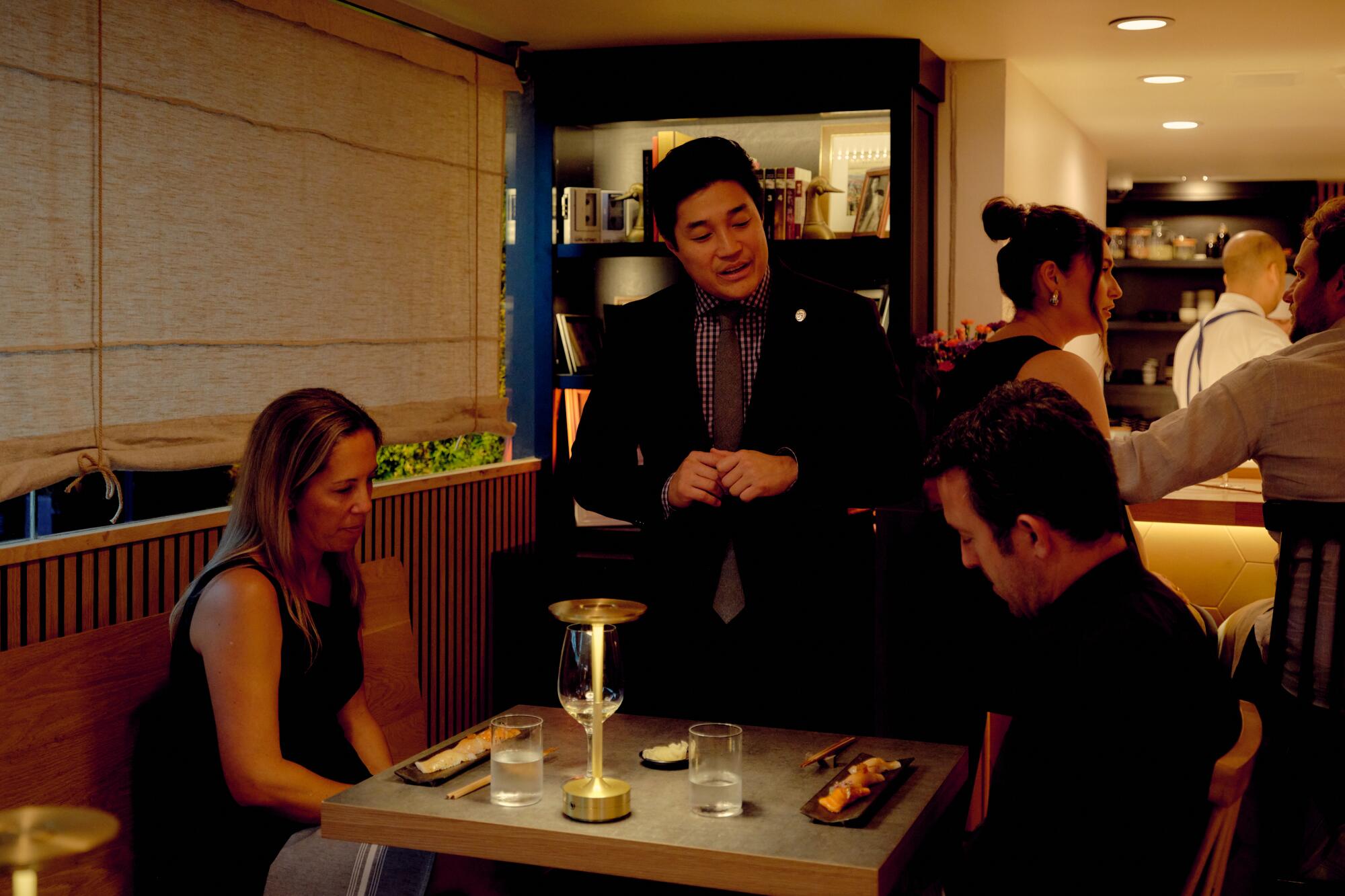
On any given night, Sushi Note's sommelier team will serve a dozen different wines by the glass throughout an omakase experience.
Big in Japan?
Ask the Sushi Note team members and they'll tell you they're taking a big risk: omakase wine pairing in this style is almost unheard of in Tokyo or elsewhere in the United States. To check it out, I rang a bell: Eric Asimov, longtime New York Times wine writer and author of “Wine With Food,” a book dedicated to the art of food and wine pairing.
“I've never come across an omakase sushi bar with wine pairings before,” Asimov tells me. Precise pairing at this level requires attention to every detail: the fish, yes, but also the seasonings, the level of vinegar in the rice (Chef Saito's level of vinegar is gently balanced, and the grains of his rice, which comes from in California, perhaps a little larger than in other restaurants), along with the impact of additional ingredients, the use of blowtorches to define the texture and a myriad of other influences that feed back into the effect of the wine, “all of which could change what could be considered the perfect wine.” pairing.”
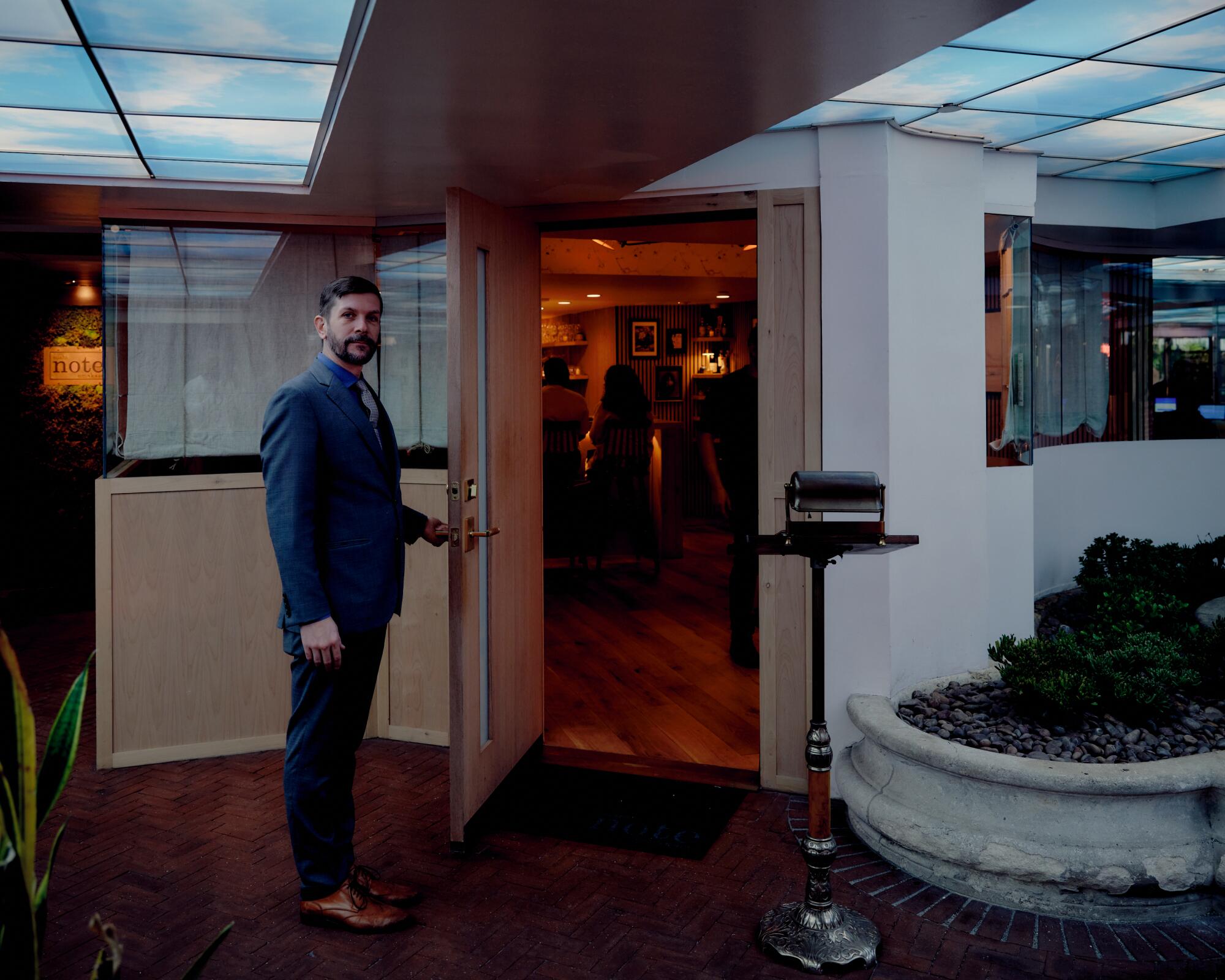
General manager Austin Ferrier opens the door to Sushi Note's compact underground dining room.
Sushi Note might be one of the few places dedicated to the art of precise omakase wine pairing, but perhaps not for long.
Chef Saito tells me that in Tokyo, chefs are starting to catch up with the idea of sushi and wine pairing, and that this sort of thing may not remain exclusive to Los Angeles for long. “Much more [sushi] “Chefs have been experimenting with wine,” says Saito. “I can see a restaurant like ours doing very well in Japan!”

